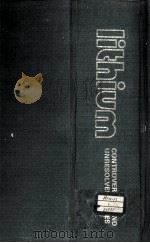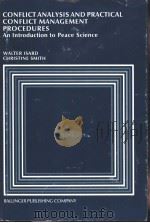《UNRESOLVED CONFLICT CHINA AND INDIA》
| 作者 | BHIM SANDHU 编者 |
|---|---|
| 出版 | 未查询到或未知 |
| 参考页数 | 274 |
| 出版时间 | 没有确切时间的资料 目录预览 |
| ISBN号 | 无 — 求助条款 |
| PDF编号 | 819596038(仅供预览,未存储实际文件) |
| 求助格式 | 扫描PDF(若分多册发行,每次仅能受理1册) |
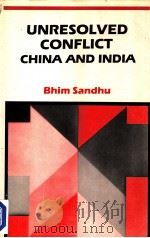
I INTRODUCTION1
II MOTIVATIONAL' VARIABLES OF INTERNATIONAL CONFLICTS5
Primary Variables7
National Power and National Security7
Secondary Variables13
Ideology13
Domestic and Societal Factors17
Geographical Factors18
Political Culture or National Character20
Perceptions and Images of the Elite23
Public Opinion27
III ANALYSIS OF THE SINO-INDIAN FOREIGN POLICIES: THE MAO AND NEHRU ERA32
India’s Foreign Policy33
Motivational Variables of India's Foreign Policy33
National Interest and Security34
Domestic Factors35
Cultural 'Heritage and Historical Traditions37
Freedom Experience and the Legacy of Gandhi40
Perception of Decision Makers42
Geopolitical Factors44
Basic Principles of India's Foreign Policy47
Nonalignment50
Panch Shila53
China's Foreign Policy55
Motivational Variables of China's Foreign Policy56
National Interest, Security, and Economic Well-being58
Sense of
Twenty Eight Years of Communist Leadership in China61
The Marxist-Leninist Ideology63
Mao's Philosophy and His Perception of the World System68
Major Principles of China's Foreign Policy73
Alignment with the Socialist Bloc73
Peaceful Coexistence74
Summary76
IV SINO-INDIAN RELATIONS BEFORE 1959: TRADITIONAL FRIENDSHIP TO BORDER CONFRONTATION78
Traditional Era of Friendship79
The Tibetan Episode85
India's Frontier Policy93
The Panch Shila Era97
China's Movements in the Himalayan Region100
Conflicting Maps102
V OPEN HOSTILITY, WARFARE AND CEASE-FIRE109
The Tibetan Uprising of1959109
Sino-lndian Military Collision115
The Sino-Indian Border Dispute115
Reasons for China's Pressures on India120
China's Expanding Frontier Policy122
India's Forward Policy123
China's Response to India's Forward Probes126
Open Warfare127
Reasons for China's Unilateral Ceasefire128
VI FACTORS MOTIVATING CHINA'S MILITARY OFFENSIVE AGAINST INDIA131
Immediate Factors132
Long Range Factors134
Tibet134
Domestic Factors135
Ideology136
Sino-Soviet Dispute137
Indo-American Friendship139
Political Culture or National Character142
VII IMPACT OF SINO-INDIAN WAR146
Effects at the National Level Inside India147
Effect on Leadership*148+++Unity in Adversity151
Non-alignment under Attack152
Nonalignment Re-Examined or Revised156
End of Panch Shila158
End of Non-Violence and Beginning of Militarism160
Split in the Indian Communist Party162
Deterioration of India's Image of China164
Impact of the Sino-Indian War on Regional Affairs166
Indo-Pakistan Conciliation166
Good Neighbor Policy168
Effects of the War on international Relations169
Indo-American Friendship169
Indo-Russian Cooperation173
Sino-Soviet, Dispute177
Divisions within the Third World179
Impact of the War at the Universal Level: The United Nations System181
India' s Support for Communist China' s Representation in the United Nations182
Lack of African Enthusiasm for China's Representation183
Shifts in India's United Nation's Diplomacy183
VIII SUMMARY AND CONCLUSIONS185
Tibetan Settlement186
Politico-Military Maneuvering191
Border Disagreements193
The Unsuccessful Summit Conference199
Sino-Indian Officials Meet202
Dual Policy202
Colombo Mediation204
Unfulfilled Arbitration206
The Open Door Era207
The Thawing Process208
The Package Deal Renewed209
Conclusion212
NOTES218
BIBLIOGRAPHY251
APPENDICES264
INDEX266
《UNRESOLVED CONFLICT CHINA AND INDIA》由于是年代较久的资料都绝版了,几乎不可能购买到实物。如果大家为了学习确实需要,可向博主求助其电子版PDF文件。对合法合规的求助,我会当即受理并将下载地址发送给你。
高度相关资料
-

- CONFLICT AND CONTROL IN LATE IMPERIAL CHINA
- 1975 UNIVERSITY OF CALIFORNIA PRESS
-
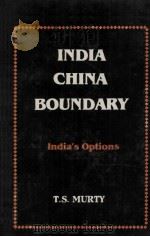
- INDIA-CHINA BOUNDARY:INDIA'S OPTIONS
- 1987 ABC PUBLISHING HOUSE
-

- ANCIENT INDIA AND ANCIENT CHINA TRADE AND RELIGIOUS EXCHANGES AD 1-600
- 1988 OXFORD UNIVERSITY PRESS
-
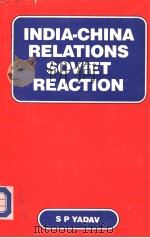
- INDIA-CHINA RELATIONS SOVIET REACTION
- 1988 HARMAN PUBLISHING HOUSE NEW DELHI
-

- INDIA AND NON-ALIGNMENT:A STUDY OF 1962 SINO-INDIAN CONFLICT
- 1986 Spick & Span Publishers New Delhi
-
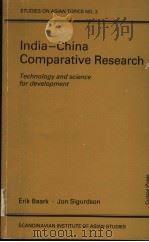
- INDIA-CHINA COMPARATIVE RESEARCH Technology and Science for Development
- 1981 CURZON PRESS
-

- THE DRAGON AND THE WILD GOOSE China and India
- 1987 GREENWOOD PRESS
-
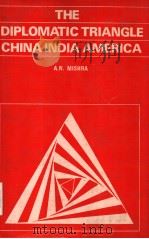
- The Diplomatic Triangle China India America
- 1980 JANAKI PRAKASHAN
-
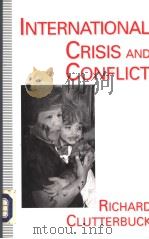
- International Crisis and Conflict
- 1993 ST.MARTIN'S PRESS
-

- PROFESSIONS AND DISCIPLINES:FUNCTIONAL AND CONFLICT PERSPECTIVES
- 1998 PRENTICE HALL
-
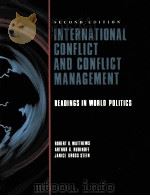
- INTERNATIONAL CONFLICT AND CONFLICT MANAGEMENT SECOND EDITION
- 1989 PRENTICE HALL
-

- COMMUNICATION AND CULTURE IN ANCIENT INDIA AND CHINA
- 1971 MANUFACTURED IN THE UNITED STATES OF AMERICA
提示:百度云已更名为百度网盘(百度盘),天翼云盘、微盘下载地址……暂未提供。➥ PDF文字可复制化或转WORD
